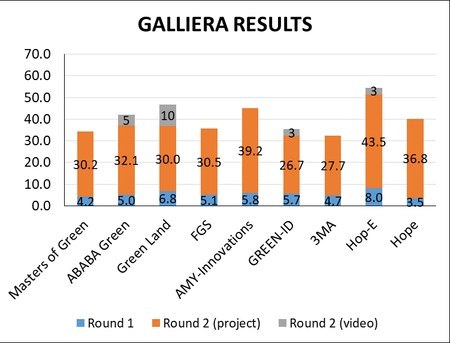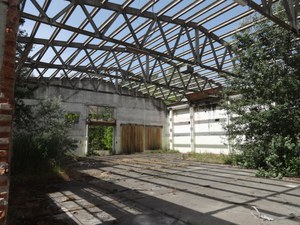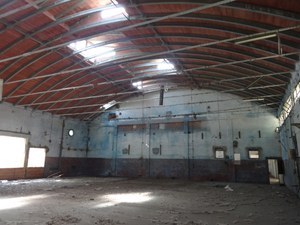
The Scientific committee has now completed evaluation of the second submission. The experts involved in the evaluation were the following:
Projects (up to 50 points):
Alberto Custodi (University of Bologna, Italy), Francesco Orsini (University of Bologna, Italy), Chiara Cirillo (University of Naples Federico II, Italy), Mohsen Aboulnaga (University of Cairo, Egypt), Songul Sever Mutlu (Akdeniz Üniversitesi, Turkey), Noémi Kappel (SZIU Faculty of Horticultural Science, Hungary), Luca Parma (University of Bologna, Italy), Antonella Samoggia (University of Bologna, Italy), Alessandra Bonoli (University of Bologna, Italy), Vivian Loges (Universidade Federal Rural de Pernambuco – UFRPE, Brazil), Gabriele Baroni (University of Bologna, Italy), Matteo Vittuari (University of Bologna, Italy), Aldo Bertazzoli (University of Bologna, Italy), Xavier Gabarrell Durany (Universitat Autonoma de Barcelona, Spain), Jesus Ochoa (Universidad Politècnica de Cartagena, Spain), Leo Marcelis (Wageningen University, The Netherland), Remi Kahane (CIRAD; France), Anna Lenzi (University of Florence, Italy), Emmanuel Geoffriau (Agrocampus Ouest, France), Francesca Meneghello (San Camillo Hospital, Italy), Gerhardus Griesel (Cape Peninsula University of Technology, South Africa), Bernd Polling (South Westfalia University of Applied Sciences, Germany), Costantina Righetto (University of Bologna, Italy), Isabella Righini (Wageningen University, The Netherland), Joan Rieradevall (Universitat Autonoma de Barcelona, Spain), Johan van Rooyen (Cape Peninsula University of Technology, South Africa), Jorg Schroder (Universität Duisburg-Essen, Germany), Juan Fernàndez (Universidad Politècnica de Cartagena, Spain), Valda Rondelli (University of Bologna, Italy), Cherubino Leonardi (University of Catania, Italy), Maria del Carmen Salas (University of Almeria, Spain).
Video (up to 10 points):
Michele Mellara (University of Bologna, Italy), Alessandro Rossi (University of Bologna, Italy).
Ranking for GALLIERA projects:

The former SIAPA area (Società Italo Americana Prodotti Antiparassitari) is located in the territory of the Metropolitan City of Bologna, in the municipality of Galliera, in the neighborhood of San Vincenzo, close to the train station. It is an area of flat conformation and has an extension of about 194’000 square meters. From the end of the 1940s to 1999, the plant was used for the production of plants’ protection products, in particular DDT. The establishment of the company gave a strong boost to the economy of Galliera, becoming a key element for the urban landscape and the local identity. The plant was later taken over by the chemical industry Caffaro, and continued the production until 1999 when it was abandoned. Since then, the absence of maintenance has let the structure toward a rapid process of deterioration, reaching the actual state of structural and functional degradation. Today, the area is the greatest obstacle to the development of the municipality of Galliera, besides being a wound in the center of the town.
The only access to the area is located in the south side, on Via Vittorio Veneto. On the east side the area is delimited by the railway line, on the north side there is the Riolo Canal and, finally, some cultivated fields on the west side separate the SIAPA area to the town. The area was built in the 1930s with a two-storey masonry building with the main façade on Via Vittorio Veneto, which housed a company producing tomato preserves. The building, characterized by internal courtyards, tripartite windows and barrel roofing, is the only one that still has typical architectural elements, which include it in the historical heritage of industrial archaeology. Later on, a counter-façade characterized by a series of vertical plastered bands covered in dark-colored ceramic was added to the building. At the end of the ‘40s, the SIAPA plant was established. Between the end of the 1950s and 1965, the warehouses, the systems and the water tower were built along three rows in the north side of the historic building. Between 1975 and 1980, other warehouses, silos and tanks were built on the border with the green-covered area in the north side, close to the Riolo Canal.

In the SIAPA area, there are three different zones: the first consists of buildings built in the early '60s with a vertical reinforced concrete structure with masonry walls and arched roofing; the second group consists of warehouses built in the mid-60s with the same vertical structure but with a two-pitch roof; the third group consists of more recent warehouses, characterized by a prestressed reinforced concrete structure. The area has been abandoned since 1999 and in 2009 some demolition works were carried out on silos, tanks, canopies and asbestos slabs were also removed.
An intense debate is still underway on what will host the former SIAPA area, which for years has played a fundamental role for the community of Galliera. What is certain is that this is a very large site, in a central position of the urban fabric of a city that has just over 5’000 inhabitants. The hypotheses are many: an university pole, an outlet, a logistics pole, an energy park.
Undoubtedly, the need today is to convert this huge crater that splits the town in two parts. It is not an easy work, but it can have favorable conditions. For example, its optimal position: on the Bologna-Ferrara axis, close to the train station and to two provincial roads.
The citizens of Galliera, many of whom have worked in the plant for decades, are tired of having this area in a state of increasing visible decay. The priority is to reclaim the site, in order to protect the health of the inhabitants. The wall structures can be totally or largely demolished, even if the facade on Via Vittorio Veneto remains a characteristic element for the territory.
Requalifying this area would mean requalifying the entire town. It could be an input for the birth of new productive, commercial activities and not only: new roads, new green areas, etc. Like many years ago, the area of the former SIAPA could once again become the engine of Galliera's economy.
You can find more information on design in the links below:
Other information and documents made available by the municipality
Streaming of the environment committee meetings of the Municipality of Galliera related to the location (use the search box at the top right to search for the environment committee meetings)
Other information from the municipality of Galliera: